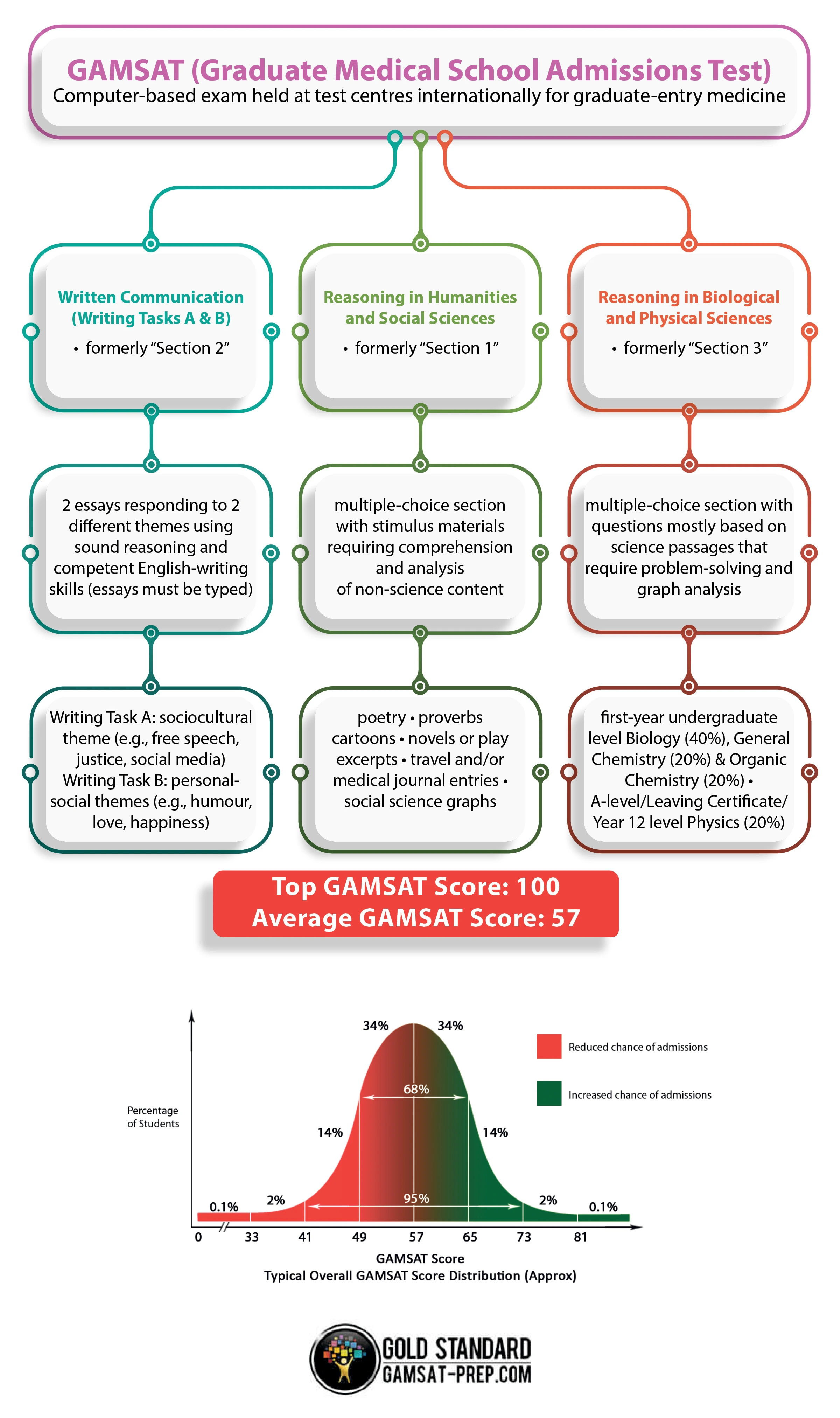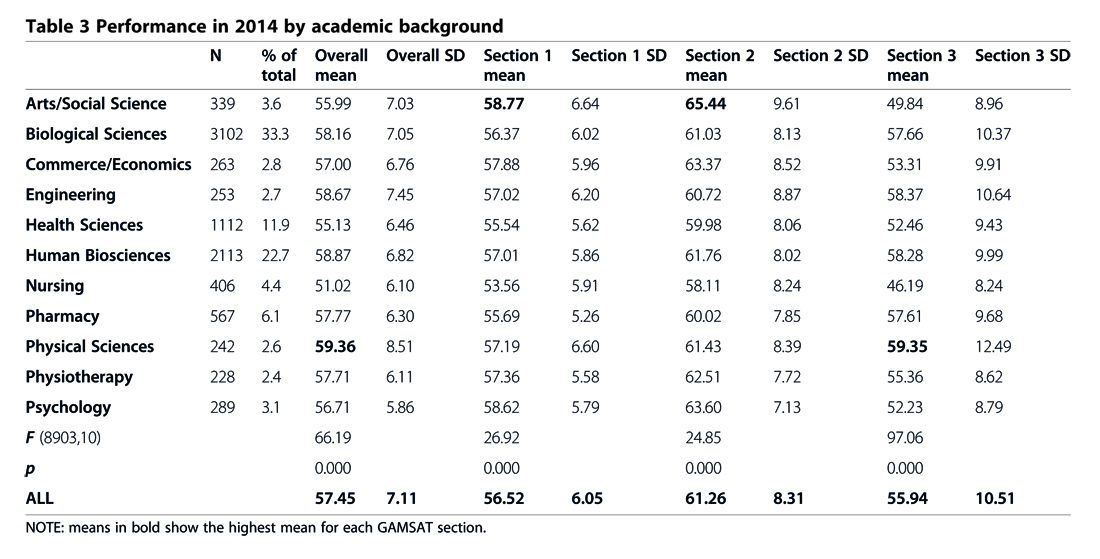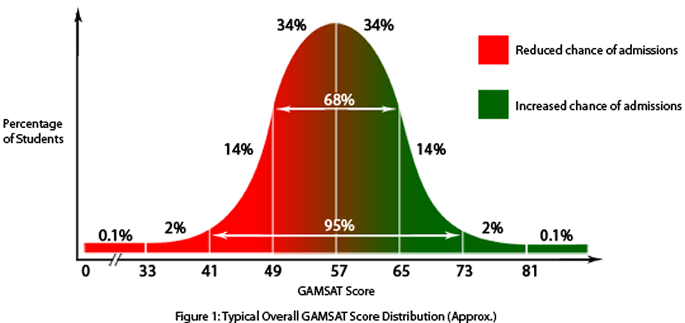Which UK medical schools require the GAMSAT?
A list of UK medical schools with GAMSAT score cut-offs & degree classifications
For 2023-2024 entry, 11 graduate entry medicine (GEM) programmes and 1 dental surgery programme in the UK accept the following GAMSAT scores and degree classifications (equivalent to GPAs in some countries):
There may be additional requirements, which are not listed in the summary below. For a more detailed list of GEM entry requirements in the UK, click here: GAMSAT Scores & Results 2023-2024 UK Of course, we strongly suggest that you also visit the website of the respective school to which you are applying.
Disclaimer: The information in our website does not replace the personal responsibility that each applicant has to access objective information and/or academic counselling regarding their choice to apply to a medical school or to study medicine. We have provided this free service for years only as a means to attempt to summarise a complex procedure with many moving parts. If you notice any information that is not consistent with your own research, please let us know as it could be of assistance to other candidates.
| University | Degree Classification | GAMSAT |
|---|---|---|
| Cardiff University: Medicine (MBBCh; 4 years) |
|
There is no minimum threshold score. |
| Keele University: Medicine (MBChB; 5 years) |
|
Min. overall score - 55 with 58 or more in Section 3 or Min. overall score - 58 with 55 or more in Section 3 Section 1 - 50 Section 2 - 50 |
| Plymouth University: Medicine (BMBS; 5 years) |
|
2021 entry cut-offs: Overall score - 66 Section 1 - 47 Section 2 - 48 Section 3 - 54 |
| Plymouth University: Dentistry (BDS; 5 years) |
|
2021 entry cut-offs: Overall score - 56 Section 1 - 54 Section 2 - 57 Section 3 - 49 |
| St George's University of London: Medicine (MBBS; 4 years) |
|
Min. overall score - calculated every year; Cut-off overall score for 2021 entry - 60 Section 1 - 50 Section 2 - 50 Section 3 - 50 |
| Swansea University: Medicine (MBBCh; 4 years) |
|
Min. overall score* - 50 Section 3 - 50 *Cut-off scores are determined every year. |
| University of Exeter: Medicine (BMBS; 5 years) |
|
Applications are sorted based on GAMSAT overall score and the cut-off varies each year. |
| University of Liverpool: Medicine (MBChB; 4 years) |
|
The minimum scores vary each year and is dependent on the number of graduate entry applicants who meet/exceed the minimum
academic criteria and other requirements. Previous years cut-off scores: Overall score - 55 or 56 Section 1 - 50 or higher Section 2 - 50 or higher Section 3 - 50 or higher |
| The University of East Anglia: Medicine (MSC Physician Associate Studies; 2 years) |
|
Min. overall score - 50 |
| The University of Nottingham: Medicine (BMBS; 4 years) |
|
Nottingham calculates your GAMSAT score as a mean average using the following formula: (Section 1 + Section 2 + Section 3) ÷ 3 = Total Score Section 1 - either a 55 or 50 if your Section 3 score is 55 Section 2 - 55 Section 3 - either a 55 or 50 if your Section 1 score is 55 |
| Ulster University: Medicine (MBBS; 4 years) |
|
Ulster University has not indicated a minimum threshold score at the time of this writing. |
| University of Sunderland: Medicine (MBChB; 5 years) |
|
Min. overall score - 55 with a minimum Section 3 score of 58 OR Min. overall score - 58 with a minimum Section 3 score of 55 Section 1 - 50 or above Section 2 - 50 or above |
| Universities of St Andrews and Dundee in partnership with University of the Highlands and Islands (ScotGEM): Medicine (MBChB; 4 years) |
|
Cut-off overall score for 2020 entry - 50 Section 1 - 49 or above Section 2 - 49 or above Section 3 - 49 or above |
What does the GAMSAT consist of?
Know the required knowledge & skills, structure and timing of the new, digital GAMSAT
GAMSAT generally evaluates your ability to solve problems, think critically and express your ideas effectively in writing through your performance in three areas; namely, Humanities & Social Sciences, Written Communication, and Biological & Physical Sciences (see the corresponding test sections in the table below). Although assumed knowledge in certain subjects would be helpful to some extent, the stimulus material used during the exam will often explore advanced-level content in order to assess your reasoning skills and ability to interpret graphs, tables, and mathematical relationships.

Currently, the GAMSAT exam is administered in testing centres with individual computers for each candidate. However, in cases of strict quarantine or lockdown restrictions (such as during the May-June 2020 sitting and in select locations in September 2020), the exam is delivered online via remote proctoring. Sitting the exam in a testing centre lasts approximately 6 hours with all three sections completed in a single day (shown in the table below). On the other hand, in exams done remotely, candidates sit Section 1 and Section 2 together in a single day while Section 3 is scheduled for a different day.
Summary of the new Digital-format GAMSAT |
|||
|---|---|---|---|
| Key Points | Event | Duration | |
| Written Communication (AKA Section 2) | Produce ideas in writing with clarity and soundness; essays are typed with no copy/paste function | 2 essays typed on a computer (you are permitted to present with 2 sheets of A4 scratch paper; option: whiteboard) |
65 minutes |
| Arrival and Sitting of Exam (multiple-choice sections only) | Bring only the acceptable ID documents and permitted items to the test centre as specified in ACER's GAMSAT Information Booklet | Security, identification | 45-60 minutes |
| Reasoning in Humanities and Social Sciences (AKA Section 1) | Key skills are reading speed and comprehension of information within socio-cultural contexts | 62 MCQs* (the test centre will provide you with 2 sheets of A4 scratch paper; option: whiteboard) |
100 minutes |
| Break | Consider packing your own food/snacks to avoid queues with nervous chatter | - | 20 minutes |
| Reasoning in Biological and Physical Sciences (AKA Section 3) | Analyse and solve problems: 40% Biology, 40% Chemistry (equally split between General and Organic); 20% Physics | 75 MCQs* (the test centre will provide you with 2 new sheets of A4 scratch paper to be used only for Section 3; option: whiteboard) |
150 minutes |
| Total Test Time | - | - | 5 hours, 15 minutes |
| Total Appointment Time | Success requires stamina; stamina improves with practice. | - | 7-9 hours** |
Can I sit the GAMSAT without a science background?
Do I need a science or healthcare background to get a high GAMSAT score?
What is the best academic background to get a good GAMSAT score?
A science background is not a prerequisite in sitting the GAMSAT. If your first degree is in a non-scientific or a non-clinical field of study, you can still sit the GAMSAT and be possibly chosen for admission to a graduate-entry programme as long as you meet any of the following qualifications:
- Has a completed Bachelor's degree in any discipline
- Will be enrolled in a penultimate (second-last) year of a Bachelor's degree
- Is in the final year of study for a Bachelor degree at the time of sitting the GAMSAT
However, it must be stressed that GAMSAT success is unlikely without knowledge and ability in the biological and physical sciences. And of course, academic excellence in the humanities and social sciences is encouraged and recognised. A study conducted by Annette Mercer, et al, published in 2015, unsurprisingly indicates the following:
"Candidates with Arts and Social Science qualifications score highest in Sections 1 and 2 and candidates with Physical Science-based qualifications score highest in Section 3, suggesting that performance in individual sections of GAMSAT is dependent on discipline-specific skills and that each section is assessing different attributes." (From GAMSAT: A 10-year retrospective overview, with detailed analysis of candidates' performance in 2014)

GAMSAT Preparation for Non-Science Background
Sitting the GAMSAT with a non-science background and eventually getting accepted to a medical school in the UK is entirely possible. Of course, getting a high GAMSAT score involves a problem-based learning approach in your preparation and adopting proven strategies such as the 70/30 formula as discussed by the experienced GAMSAT teacher, Dr Brett Ferdinand, in this video:
How is the GAMSAT scored?
GAMSAT scores are mapped onto a scale which ranges from a high of 100 to a low of 0. Note that more than 95% of candidates will receive a scaled GAMSAT score between 40 and 80.
GAMSAT scores are based on Item Response Theory (IRT) which depends on the cohort and the degree of exam difficulty. IRT is a statistical adjustment to ensure that GAMSAT scores are comparable from year to year. Your GAMSAT score is not a direct equivalent to your raw score (i.e. how many correct answers divided by how many questions in Section 1 or 3), nor is your GAMSAT score a simple percentage.
Your GAMSAT results will be available in November for the September sitting. Results for GAMSAT held in March will be available in May. An email will be sent to you explaining how to access your results online. You will receive a score for each of the three sections, together with an Overall GAMSAT Score. The Overall Score is a weighted average of the three component scores. Each of the four GAMSAT scores is expressed on a scale of 0 to 100. Again, these are not percentage marks.
The Overall GAMSAT Score is calculated using the following formula*:
Overall Score = (1 x Section I + 1 x Section II + 2 x Section III) / 4
*As you can see, the science section (Section III) is weighted twice so that your overall GAMSAT score is 50% non science and 50% science. Some medical schools, such as The University of Nottingham in the UK and both the University of Melbourne and the University of Sydney in Australia, weight all three sections equally.Note: The Overall Score is calculated to several decimal places. It is not possible for candidates to replicate this process.
What is a good GAMSAT score?
Average, good and high GAMSAT scores are relative terms and, as such, are dependent on perspective, the cohort and the medical school to which you intend to apply.

The following table provides a general guide. Please keep in mind that the percentile rank indicates your test performance relative to all the students who sat the same test on the same day. It records the percentage of students whose scores were lower than yours.
| Score | Percentile | Score |
|---|---|---|
| 56-58 | 50th | average |
| 61-63 | 75th | usually good* |
| 73 or higher | 98th | very high |
*Please note, a "good" score may be good enough for admittance to one particular medical school but below the cutoff of another. Consult the websites of the medical institutions to which you intend to apply.
An average GAMSAT score is often around 56-58 and a high GAMSAT score is over 65. Technically, the highest possible GAMSAT score is 100; however, only 0.1% of students score over 80. When you hear a student make the claim "I scored 100", they are usually rounding their percentile rank as opposed to providing the scaled score.
Please keep in mind when evaluating the statistics provided and the graphic: this data is meant to give you a general idea of the process. The numbers can vary somewhat from one exam sitting to another. And as mentioned previously, you cannot replicate the scoring system at home since there is no formula provided to convert raw scores into official GAMSAT scores.
When can I sit the GAMSAT in the UK?
Key GAMSAT dates in the UK
You can sit the GAMSAT in the UK twice a year, in March and September, in each of the UK, Ireland and Australia, as well as selected international locations. The following is a table with key dates to keep you on track with registration and sitting dates. For detailed information such as past GAMSAT release dates and application deadlines to graduate entry medicine programmes, please go to our GAMSAT Scores & Results UK page.
GAMSAT 2025 Key Dates in the UK
| GAMSAT September 2025 | GAMSAT March 2026 | |
|---|---|---|
| Testing Window | Written Communication - August 23 - 24, 2025 Humanities and Biological Sciences - September 12 - 14, 2025 |
Written Communication - March 2026, TBD Humanities and Biological Sciences - March 2026, TBD |
| Standard Registration Period | Early May 2025 | Early November 2025 |
| Late Registration | Closes in July 11th at 1 pm BST | Closes in February 1st at 10 am GMT |
| GAMSAT Scores Release Dates | Mid-November 2025 | Mid to late May 2026 |
How much does the GAMSAT cost?
GAMSAT registration fee is £292 per sitting. If you register late, you'll need to pay the late fee of £70.
How do I register for the GAMSAT exam?
Registrations for both the March and September exams are done online. You are required to provide a valid email address in creating an online account at the Australian Council for Educational Research's website. For more information about the registration process, please go to ACER's official GAMSAT website.
GAMSAT UK Test Centres
GAMSAT test centres in the UK for September are located in Birmingham, Cardiff, Derry/Londonderry (NI), Edinburgh, Liverpool, London, Norwich, Plymouth, Sheffield and Sunderland. GAMSAT test centres outside the UK are located in Singapore, Washington D.C. and Wellington, New Zealand. As described above, students applying to medical schools which accept the GAMSAT in the UK, Ireland or Australia can sit any of the two available exams during the year. Students can opt to sit the GAMSAT in March in Bristol, Derry/Londonderry (NI), Leeds, Liverpool and London. No other GAMSAT testing centres are available in the UK
How many times can I sit the GAMSAT?
There is no limit to the number of times you can sit the GAMSAT. You may even choose to sit the exam twice in one year. It is important to note that any two tests on different examination dates will have, essentially, the same format; however, many questions are changed for each exam. GAMSAT scores from either the March or September sitting are also interchangeable and can be used to apply to any university in the UK, Ireland and Australia that requires the GAMSAT.
However, please note that GAMSAT scores are valid for only 2 years in the UK and Ireland, and 4 years in Australia. Make sure that your scores have not expired if you are using a score from a previous sitting of the GAMSAT. Otherwise, you choose the GAMSAT score that you wish to submit for consideration for admissions.
| Location | Application | GAMSAT March Sitting | GAMSAT September Sitting |
|---|---|---|---|
| UK | Apply 2025, Begin 2026 | 2024 | 2025 | 2024 | 2025 |
| Ireland | Apply 2025, Begin 2025 | 2024 | 2025 | 2023 | 2024 |
| Australia | Apply 2025, Begin 2026 | 2022 | 2023 | 2024 | 2025 | 2021 | 2022 | 2023 | 2024 |









